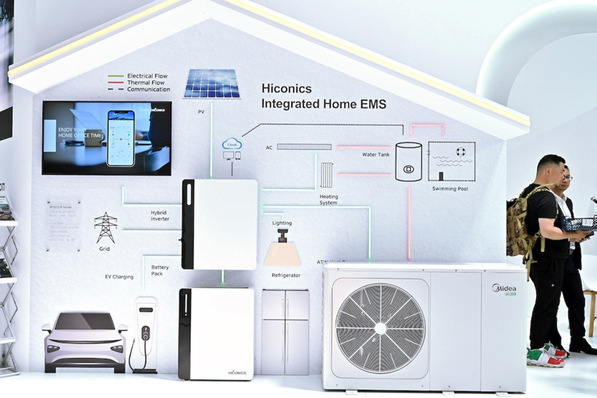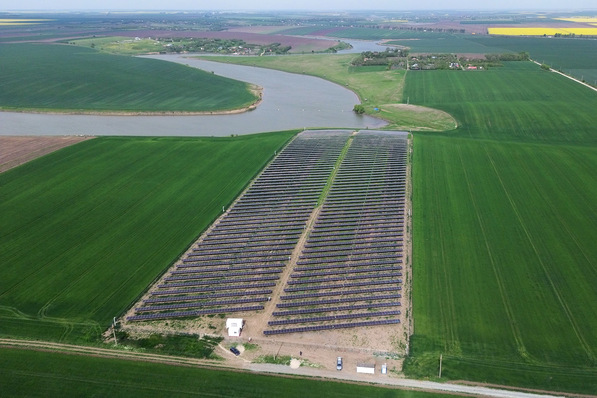Europe’s energy transition heavily relies on ageing electricity grids. Today, the capacity of copper cables to integrate mass electrification and meet higher decarbonisation targets in Europe is limited. It is high time legislators embrace an anticipatory approach to future-proof electricity networks. Eurelectric’s new grid report shows how the current electricity market design reform can put this approach into action by incentivising anticipatory investments, longer-term grid planning, digitalisation, flexibility and more advanced data exchange.
By 2030, Europe will see around 50 to 60 million heat pumps, 65 to 70 million electric vehicles (EVs) and over 600 gigawatts of additional renewable capacity as foreseen by REPowerEU. Around 70% of that capacity will be directly connected to distribution grids – those electric lines that travel across cities and villages and connect increasing windmills and solar installations –. While becoming ever more critical to the continent’s decarbonisation, Europe’s distribution grids face scarce capacity, cumbersome permitting, and insufficient investments.
Scarce capacity leads to congested areas and higher costs
“Getting our electricity networks fit for net zero should be a top priority in the coming years, both at EU and national level” – says Kristian Ruby, Secretary General at Eurelectric – “This requires a new mindset among regulators and legislators. One that anticipates Europe’s capacity needs to integrate more renewable projects, and one that accommodates unprecedented electrification of transport, buildings and industry to match the speed and scale needed for Europe’s energy transition.”
Scarce capacity translates into longer waits for grid connections, more congested areas, and higher costs for network users. To avoid this, Europe must reinforce and expand its grid infrastructure to add capacity while trying to make the most of the capacity that already exists. Anticipatory planning of grid extension is now key to meeting EU electrification needs by 2030 and ensuring reliable electricity across thousands of kilometres of power lines throughout Europe. The surest way to enable such an urgent build-out is to plan and invest ahead.
Did you miss that? Solutions for the power grid of the future
Anticipatory investments should be structurally incorporated in the electricity market design reform to bridge the EU’s €7 billion annual investment gap in electricity infrastructure. As shown in Eurelectric’s Decarbonisation Speedways study, the EU currently invests €23 billion per year in grid infrastructure. This is way too low: investment in distribution grids should reach no less than €38 billion per year until 2030 and up to €100 billion per year until 2050, considering the anticipated additional demand to deliver on the EU decarbonisation’s agenda.
Catalysing the necessary levels of investment also requires accelerated permitting. Today, lengthy grid permitting often delays renewable project deployment. This structural time lag increases the risk of congestion due to growing connection and capacity requests. A simplified permitting process must urgently be agreed upon by policymakers. Factoring grid updates into a generator’s project under a unique permit can also ease this administrative burden.
Demand-side response and local flexibility markets
Concurrently, while developing new infrastructure, existing grids should be optimised to the fullest. This calls for digitalisation and flexible connection agreements as a way to optimise the use of existing capacity in congested areas. By allowing faster grid connections for part of the needed capacity, these agreements can partially alleviate the urgency of additional capacity buildout. As these instruments enable the existing grid to be used more efficiently, they should be promoted to all network users under a clear legal framework.
Electricity consumers can further help grid management and enhance the overall system stability by shifting or lowering their consumption to less congested hours through demand-side response schemes and local flexibility markets. Unleashing higher flexibility, however, requires a smarter grid. Regulators should incentivise system operators’ investments in digitalisation as a critical component to delivering a more resilient power system and efficient service to network users.
Also interesting: Crucial role of clean electricity for decarbonisation
Beyond just going digital, planning ahead necessitates accurate information. Boosting closer collaboration and transparent data exchange among system operators and market players, as well as national authorities, is paramount to have a more detailed grasp of the requested time of connection and capacity needs. Robust data-sharing mechanisms can enable system operators to perform more accurate forecasts on emerging generation patterns and capacity requests.
Providing data access, however, should not come at the expense of customers' privacy. Implementing clear data privacy and security measures is vital to protecting sensitive information and maintaining trust among all relevant actors. (hcn)








